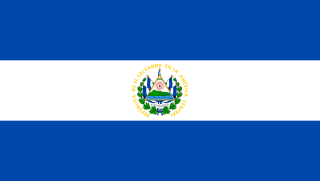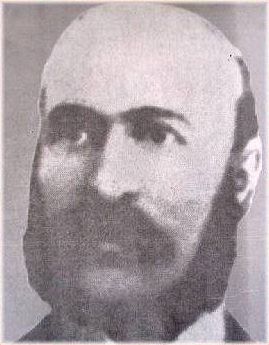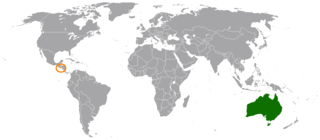This is a list of museums in El Salvador .
This is a list of museums in El Salvador .

El Salvador, officially the Republic of El Salvador, is a country in Central America. It is bordered on the northeast by Honduras, on the northwest by Guatemala, and on the south by the Pacific Ocean. El Salvador's capital and largest city is San Salvador. The country's population in 2024 was estimated to be 6 million according to a government census.

This is a demography of the population of El Salvador including population density, ethnicity, education level, health of the populace, economic status, religious affiliations and other aspects of the population.

The Football War, also known as the Soccer War or the 100 Hour War, was a brief military conflict fought between El Salvador and Honduras in 1969. Existing tensions between the two countries coincided with rioting during a 1970 FIFA World Cup qualifier. The war began on 14 July 1969 when the Salvadoran military launched an attack against Honduras. The Organization of American States (OAS) negotiated a cease-fire on the night of 18 July, hence its nickname. Salvadoran troops were withdrawn in early August.

San Salvador is the capital and the largest city of El Salvador and its eponymous department. It is the country's largest agglomeration, serving as the country's political, cultural, educational and financial center. The municipality of San Salvador has 525,990 inhabitants (2024). The Metropolitan Area of San Salvador, which comprises the capital itself and 13 of its municipalities, has a population of 2,404,097. The urban area of San Salvador has a population of 1,600,000 inhabitants.

Santa Ana is the second largest city in El Salvador, after the capital of San Salvador. It is located 64 kilometers northwest of San Salvador, the capital city. Santa Ana has approximately 277,264 (2020) inhabitants and serves both as the capital of the department of Santa Ana and as the municipal seat for the surrounding municipality of the same name. For its administration the municipality is divided into 35 colonias (neighborhoods) and 318 small villages.

The Legislative Assembly is the legislative branch of the government of El Salvador.

A pupusa is a thick griddle cake or flatbread from El Salvador and Honduras made with cornmeal or rice flour, similar to the Colombian and Venezuelan arepa. In El Salvador, it has been declared the national dish and has a specific day to celebrate it. It is usually stuffed with one or more ingredients, which may include cheese, chicharrón, squash, or refried beans. It is typically accompanied by curtido and tomato salsa, and is traditionally eaten by hand.

The culture of El Salvador is a Central American culture nation influenced by the clash of ancient Mesoamerica and medieval Iberian Peninsula. Salvadoran culture is influenced by Native American culture as well as Latin American culture. Mestizo culture, Afro-Latin culture and the Catholic Church dominates the country. Although the Romance language, Castilian Spanish, is the official and dominant language spoken in El Salvador, Salvadoran Spanish which is part of Central American Spanish has influences of Native American languages of El Salvador such as Lencan languages, Cacaopera language, Mayan languages and Pipil language, which are still spoken in some regions of El Salvador.

Joaquín Eufrasio Guzmán was a Central American politician and military general who served as acting President of El Salvador on three occasions: from 25 October 1844 to 16 February 1845, from 25 April 1845 to 1 February 1846, and from 19 January 1859 to 15 February 1859, after conducting a coup against General Francisco Malespín after the Guerra de Malespín, an invasion into Nicaragua which he solely started to loot the Nicaraguan metropolis of León.
The history of the Jews in El Salvador goes back to the 1800s. Jews have been present in El Salvador since the early 19th century, starting with Sephardic Jews and continuing with the arrival of refugees from Europe during World War II. El Salvador has the second largest community in Central America, the majority established in San Salvador, which is the second city with the most Jews in Central America, behind Panama City.
The Museo de la Palabra y la Imagen is a museum located in San Salvador, El Salvador. It was founded in the late 1990s by the Venezuelan journalist Carlos Henríquez Consalvi as a museum dedicated to collecting and preserving memories of the Salvadoran civil war, incorporating memories across the political spectrum. The general enthusiasm of the public quickly prompted the MUPI to expand and it now includes a variety of exhibits that deal with various moments in the nation's past.

Salvadorans, also known as Salvadorians, are citizens of El Salvador, a country in Central America. Most Salvadorans live in El Salvador, although there is also a significant Salvadoran diaspora, particularly in the United States, with smaller communities in other countries around the world.

David Joaquín Guzmán (1843–1927) was a Salvadoran polymath, making contributions in science, and archeology, and as a museum curator and educator. He essentially founded and was first director of what is now known as the Museo Nacional de Antropología David J Guzmán, named in his honor. He also founded an anthropology museum in Nicaragua. He served in several positions in the government including being elected as representative to the Assembly.
Ana María de Martínez was a Salvadoran artist. She is best known for creating acrylic paintings on canvas. Martinez was a self-taught painter, and her career expanded to almost four decades.
A German Salvadorans are a Salvadorans descendant of German citizens who have adopted the two nationalities or Salvadorans who have German ancestry, there is a record of waves of German immigrants since the 19th century, later with the arrival of German refugees during the Second World War. El Salvador has important relations with Germany

El Salvador and Spain have long-standing cultural and diplomatic relations, owing to the history of the Spanish Empire. Bilateral relations between the two as sovereign states began in 1865. Both nations are members of the Association of Academies of the Spanish Language, Organization of Ibero-American States and the United Nations.

El Salvador and France have maintained diplomatic relations since 1858. The two nations maintain a close dialogue on Central American regional integration, democratic security, good governance, the rule of law, as well as development aid, among other issues. Both are also members of the United Nations.

Current and historical relations exist between the Commonwealth of Australia and the Republic of El Salvador. Both nations enjoy friendly relations, the importance of which centers on the arrival of Salvadoran refugees to Australia during the Salvadoran Civil War. There is a community of approximately 20,000 people of Salvadoran origin in Australia. Australia is home to the third largest Salvadoran community living abroad. Both nations are members of the Forum of East Asia–Latin America Cooperation and the United Nations.
Anarchism in El Salvador reached its peak during the labour movement of the 1920s, in which anarcho-syndicalists played a leading role. The movement was subsequently suppressed by the military dictatorship before experiencing a resurgence in the 21st century.

The Salvadoran Museum of Art is an art museum in San Salvador, the capital city of El Salvador. The museum was first opened on 22 May 2003. It is open to the public and receives more than half a million visitors annually.